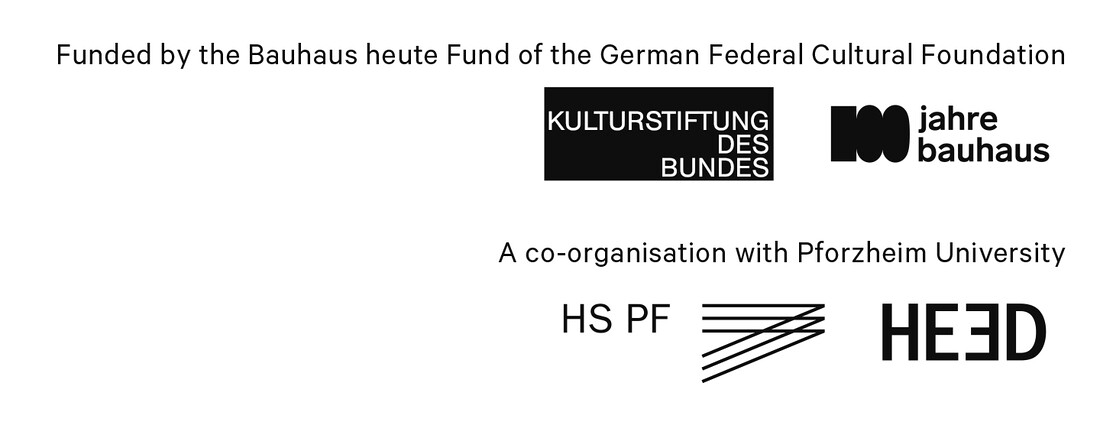March 22–June 16, 2019
Luitpoldstraße 5
90402 Nuremberg
Germany
Hours: Tuesday–Sunday 10am–6pm,
Thursday 10am–8pm
T +49 911 2402069
F +49 911 2402029
info@nmn.de
“What is play? play is work. work (that’s done willingly) is play. children’s play is gradual growing into work […]” said the young Bauhaus student Alma Siedhoff-Buscher, who specialized in designs for children, and who can now be seen as a central figure at the Bauhaus. Her poly-functional playroom epitomizes her progressive concepts.
The Bauhaus masters recognized the central importance of experimental approaches. The preliminary course, an elementary introductory semester, was the training ground for this. Johannes Itten gave his inaugural talk 1919 under the motto: “Our play, our party, our work.” Play, then, was the program from the outset. Especially in the school’s early years, play (in the broadest sense) was deliberately encouraged, with all of its joy and seriousness, as the basis for every kind of design. In his Bauhaus Manifesto, founder Walter Gropius asserted the need for “privileging the creative, the freedom of individuality.” The many parties at the school became an exuberant rite, its stage a laboratory for unbridled imagination held together by intellectual and social elements. Gropius, speaking of his own design for the Bauhaus building in Dessau, himself fondly referred to his “full-scale construction kit”—proof of a radical interlocking of play and work. The Bauhaus stands for successful educational concepts and for designing new forms of coexistence. But this insight was not to manifest itself in the curriculum of the later years. Only in retrospect did the view gain ground that play was the innovation at the Bauhaus.
Put simply, the school was working to build an open, modern society. Although its teaching centered on design, there was a deliberate focus on the personal development of its students into free, broadly educated individuals, with independent thinking trained alongside manual and creative skills. Play, always associated with the privilege of freedom and autonomy, evolved into an opportunity for emancipatory awareness for the (young) individual. Numerous concepts and strategies from the progressive teaching theories of the nineteenth century, especially those of Friedrich Fröbel and Maria Montessori, were applied by both masters and students at the Bauhaus.
Today, play still exerts a great influence on creative work. Its potential in the creative process can be traced to the present: in the working environments of the new economy, play has become a motor for creativity, and thus productivity, and its role in the future seems to be crucial. After the abrupt closure of the Bauhaus by the Nazis in 1933, its methods were carried out into the world. Josef Albers, for example, brought Bauhaus teaching to Black Mountain College in the United States. From here, the powerful creative models flowed through architects like Richard Buckminster-Fuller into the American counterculture of the 1960s and ‘70s. Coinciding with the revolutions in information technology, rural artist communes like Drop City developed and tested new modes of living that exerted a key influence on the philosophy of today’s global corporations like Apple, Google, Facebook, and Amazon. In this way, the playful culture of the Bauhaus was adopted and further developed as a pioneering approach by players in the creative economy of the mid-1990s. Ultimately, then, the network philosophy of the Bauhaus culminated in the co-creativity of laboratories in Silicon Valley, which has been converted into one big playground; the new economy understood and profited from the instrumentalization of art by economic parameters.
Finally, the ongoing success of the Bauhaus is based on just a few principles: a radical focus on essentials, an experimental design process, lively intellectual and social exchange—and play. This is a construction kit that works relatively simply and perhaps that is its strength. All of the building blocks are also maxims that still apply to our work and life today, and this Bauhaus approach is still a toolkit for the future.
The exhibition BAU [ SPIEL ] HAUS follows the dialogical concept of its curators Thomas Hensel and Robert Eikmeyer. It is a fluid combination of historical artefacts and more recent contributions with commissioned works by contemporary artists. Liam Gillick designed the display for the exhibition, translating the subject of play into three dimensions. Olaf Nicolai conceptualized the three-part publication, including a catalog, a reader, and an artist’s book.
Exhibits by artists including Friedrich Fröbel, Maria Montessori, Gustav und Otto Lilienthal, Lyonel Feininger, Bruno Taut, Walter Gropius, Hermann Finsterlin, Johannes Itten, Oskar Schlemmer, Anni Albers, Ludwig Hirschfeld-Mack, Alma Siedhoff-Buscher, Georg Weidenbacher, Max Bill, Hans Gugelot, Hans Brockhage, Renate Müller, Laurie Simmons, Liam Gillick, Olaf Nicolai, Yto Barrada, Goshka Macuga, Thomas Hawranke and Eva Grubinger.
Curated by Thomas Hensel and Robert Eikmeyer, display by Liam Gillick, publication by Olaf Nicolai.



